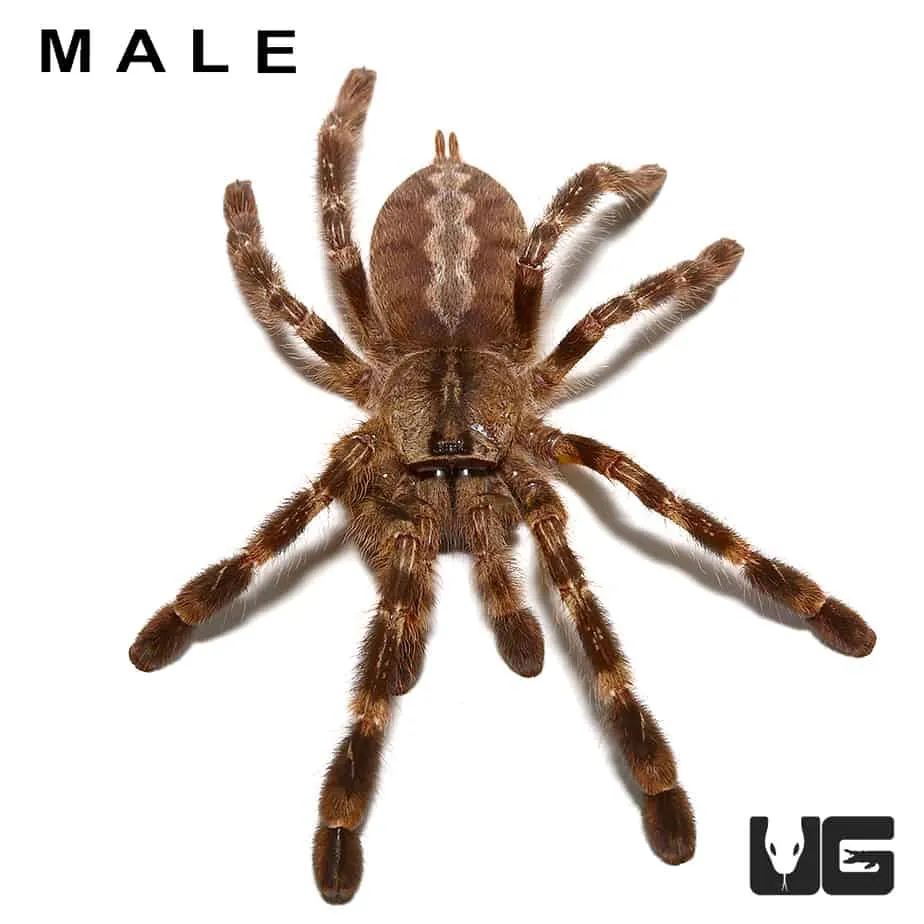What is a Blue Indian Ornamental Tarantula?
The Blue Indian Ornamental Tarantula, scientifically known as Poecilotheria metallica, is a stunning and sought-after species among tarantula enthusiasts. Native to the tropical dry forests of Andhra Pradesh, India, these arboreal tarantulas are renowned for their striking appearance, characterized by vibrant blue and yellow coloration. These spiders are a part of the Poecilotheria genus, often called ‘ornamental’ tarantulas, which are known for their complex patterns and vivid colors. If you’re considering a Blue Indian Ornamental Tarantula for sale, it’s essential to understand their specific needs, temperament, and the commitment required to provide them with a healthy and fulfilling life. Their beauty and unique characteristics make them a captivating addition to any collection, but responsible ownership is paramount.
Appearance and Characteristics
The Blue Indian Ornamental Tarantula’s striking appearance is one of its most appealing features. These spiders exhibit a vibrant blue coloration on their legs and carapace, contrasted by yellow or gold markings on their abdomen. This unique color combination sets them apart from many other tarantula species. The overall appearance of these tarantulas makes them a true spectacle, adding a splash of color and exotic appeal to any collection. These spiders also possess a characteristic pattern of intricate markings, adding to their visual complexity. The contrast between the blue legs and the yellow abdominal patterns makes the Blue Indian Ornamental Tarantula a visual highlight.
Size and Color

Adult Blue Indian Ornamental Tarantulas can reach a leg span of up to 7–8 inches (17-20 cm). The intensity of their blue coloration can vary based on factors such as the spider’s age, diet, and environmental conditions. Juveniles often display less vivid colors, with their hues intensifying as they mature. The females tend to be larger and more robust than the males. The blue coloration is most pronounced on the legs and carapace, with yellow or gold markings on the abdomen adding to the visual appeal. Keeping these factors in mind can help you understand the size and appearance expectations when you look for a Blue Indian Ornamental Tarantula for sale.
Lifespan and Behavior
Female Blue Indian Ornamental Tarantulas can live for up to 12–15 years, while males typically have a shorter lifespan, around 3–5 years. These tarantulas are arboreal, meaning they live primarily in trees, so you’ll need to consider this for their enclosure setup. They are known to be fast and can be defensive, making careful handling a must. While they are generally not aggressive, they can bite if they feel threatened. It’s important to respect their space and understand their behaviors when you’re looking for a Blue Indian Ornamental Tarantula for sale to ensure you can provide them with the appropriate living conditions and safe handling procedures.
Where to Find a Blue Tarantula For Sale
Finding a Blue Indian Ornamental Tarantula for sale requires careful research. Due to their popularity, they can be found through several channels. It’s crucial to choose a reputable source to ensure you receive a healthy spider and accurate information. Buying from a reputable source minimizes the risk of obtaining a sick or poorly cared-for tarantula. Proper research will significantly enhance your chances of a positive buying experience. Whether you buy online or from a local pet store, prioritizing the health and well-being of the tarantula is essential.
Reputable Breeders and Vendors
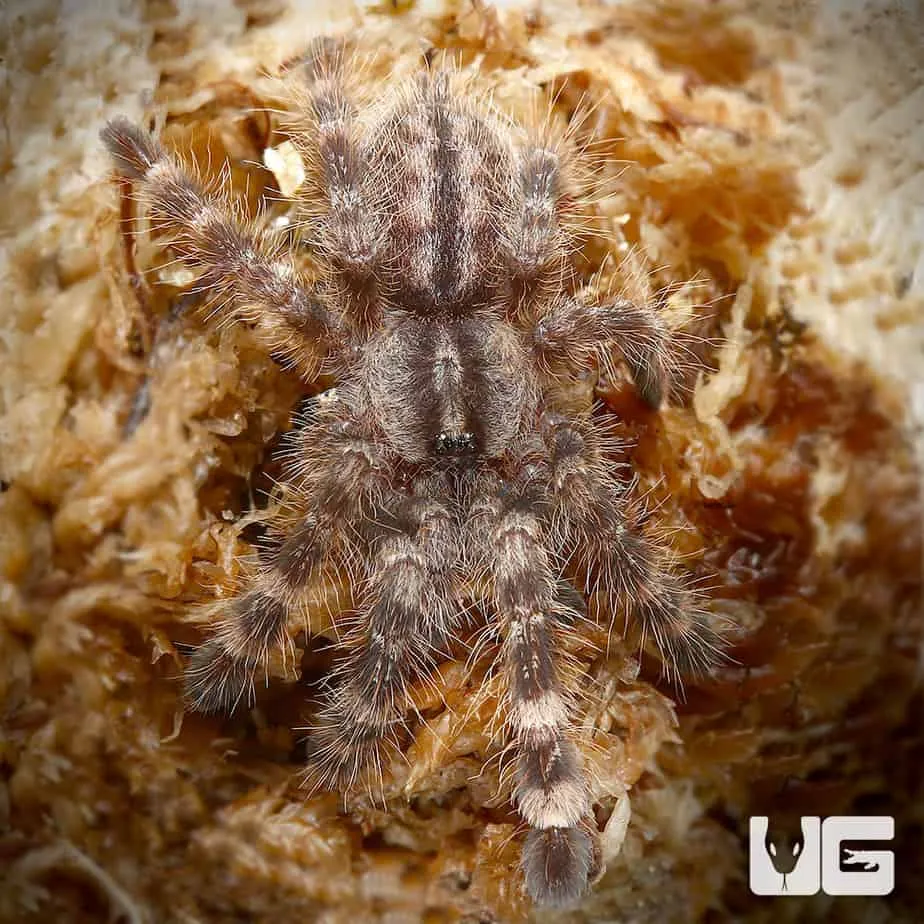
Look for breeders and vendors that have a good reputation in the tarantula community. These sources usually provide details about their tarantulas’ origins, health, and care requirements. Check online reviews and forums to assess their credibility. Reputable breeders will often provide a guarantee of the spider’s health upon arrival. They will also be knowledgeable and willing to answer your questions about the species. Reputable vendors often specialize in exotic pets, which helps to ensure they have a deep understanding of these creatures’ needs and how to best care for them.
Online vs. Local Pet Stores
Both online vendors and local pet stores can offer Blue Indian Ornamental Tarantulas for sale, but each has its pros and cons. Online vendors often have a wider selection and can ship directly to you, but you won’t see the spider in person before purchasing. Local pet stores allow you to view the tarantula before you buy, but their selection may be limited. When purchasing online, make sure the vendor has a solid reputation for shipping live animals safely. Local pet stores may offer personalized advice and support, but you should still research the store’s reputation. Always check the spider’s condition before buying, regardless of where you purchase it.
Things to Consider Before Buying
Before purchasing a Blue Indian Ornamental Tarantula for sale, you must prepare properly. This exotic pet requires specific environmental conditions and a consistent care routine. Owning a tarantula is a long-term commitment, with females living for over a decade. Ensure you have the time, resources, and space to care for the spider. You should research the species thoroughly and understand their behavior, feeding habits, and potential health issues. You should be fully aware of the tarantula’s potential and any requirements for its health and happiness. This preparation is crucial to a responsible pet ownership experience.
Habitat and Enclosure
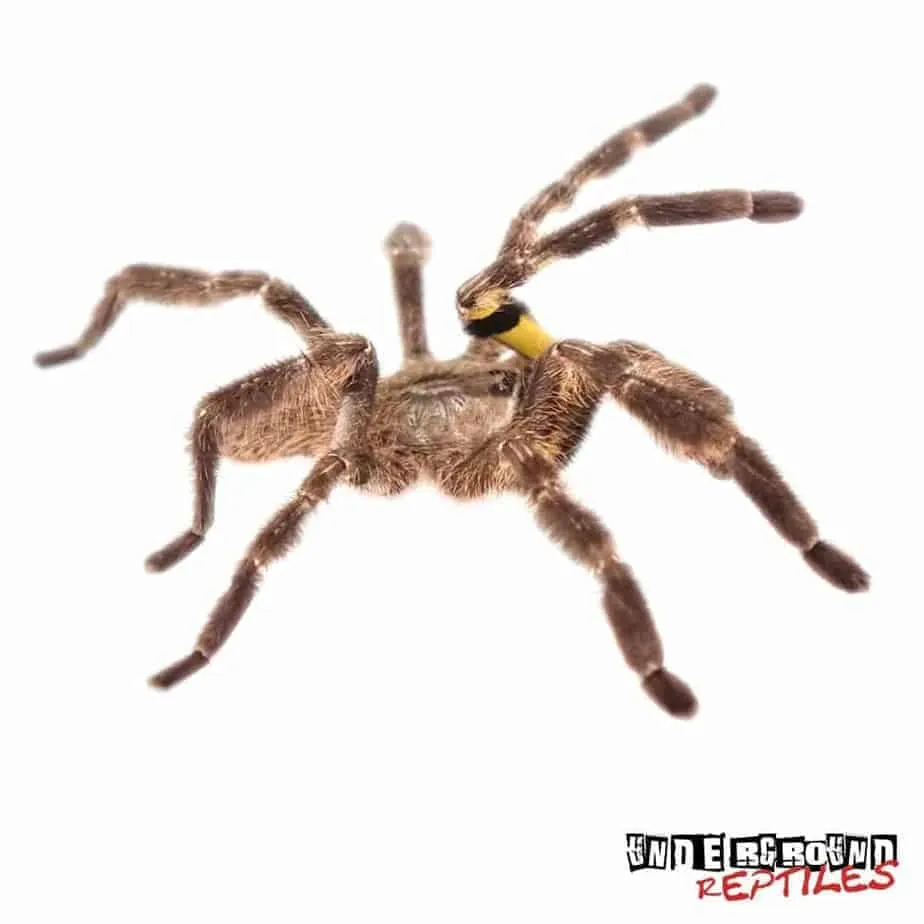
Blue Indian Ornamental Tarantulas are arboreal, meaning they prefer to live in trees. Your enclosure should reflect this, with vertical space being more important than floor space. An appropriate enclosure size for an adult is typically around 12x12x18 inches (30x30x45 cm), though larger is always better. Provide plenty of vertical climbing space with branches, cork bark, and other decorations. The substrate should be a mix of peat moss, vermiculite, and coconut fiber to help maintain humidity. The enclosure should have proper ventilation to prevent mold growth and ensure the tarantula’s health. Creating a secure and enriching environment is essential for the spider’s well-being.
Feeding and Care
These tarantulas are insectivores. Feed them a varied diet of appropriately sized insects, such as crickets, roaches, and mealworms. Feed juveniles 2–3 times per week, and adults once a week. Always provide a shallow water dish with clean water. Maintain a temperature between 75–85°F (24–29°C) and a humidity level of 60–70%. Regularly remove any uneaten food and clean the enclosure to prevent health problems. Regular misting is needed to maintain humidity, especially during molting. Consistent and accurate care is key to a healthy and happy Blue Indian Ornamental Tarantula.
Common Health Issues
While Blue Indian Ornamental Tarantulas are generally hardy, they can be susceptible to certain health issues. Common problems include dehydration, mites, and fungal infections. Dehydration can be prevented by providing a constant water source and maintaining proper humidity levels. Mites can be introduced through substrate or feeder insects; quarantine new additions to prevent spread. Fungal infections can occur due to high humidity and poor ventilation. Regular inspections of your tarantula and its enclosure are essential for catching potential problems early. Be ready to consult an exotic pet veterinarian if you suspect your tarantula is unwell.
How to Care For Your Blue Tarantula
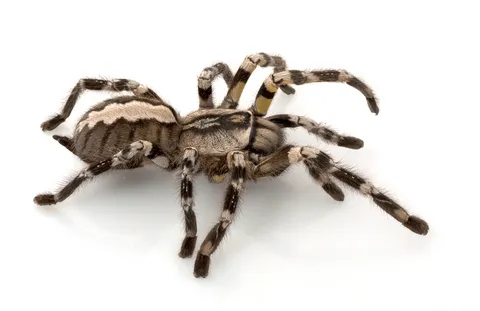
Caring for a Blue Indian Ornamental Tarantula involves creating a suitable habitat, providing proper nutrition, and handling the spider with care. You should set up the enclosure properly, establishing the best environment for the species. A consistent feeding schedule will help keep your tarantula healthy. Moreover, safe handling techniques minimize any risk to you or the spider. The goal is to create an environment where your tarantula can thrive.
Setting Up the Enclosure
When setting up your Blue Indian Ornamental Tarantula’s enclosure, focus on replicating its natural habitat. Start with a secure, well-ventilated enclosure, such as a glass terrarium or a plastic container. Use a substrate mix of peat moss, vermiculite, and coconut fiber, about 4–6 inches deep, to retain humidity. Provide vertical climbing opportunities using branches, cork bark, and artificial plants. A water dish should always be available. Maintaining proper temperature and humidity levels is critical to the tarantula’s health. Regular monitoring is key to making the appropriate adjustments to the enclosure.
Feeding Schedule
Establish a feeding schedule that is appropriate for your tarantula’s age. Juveniles should be fed more frequently, around 2–3 times per week, while adults can be fed once a week. Feed your tarantula appropriately sized insects. Remove any uneaten food within 24 hours to prevent mold and mites. Always provide a shallow water dish with clean water. Observe your tarantula’s behavior and adjust the feeding schedule as necessary. Provide a balanced diet and be mindful of your tarantula’s overall health.
Handling and Safety
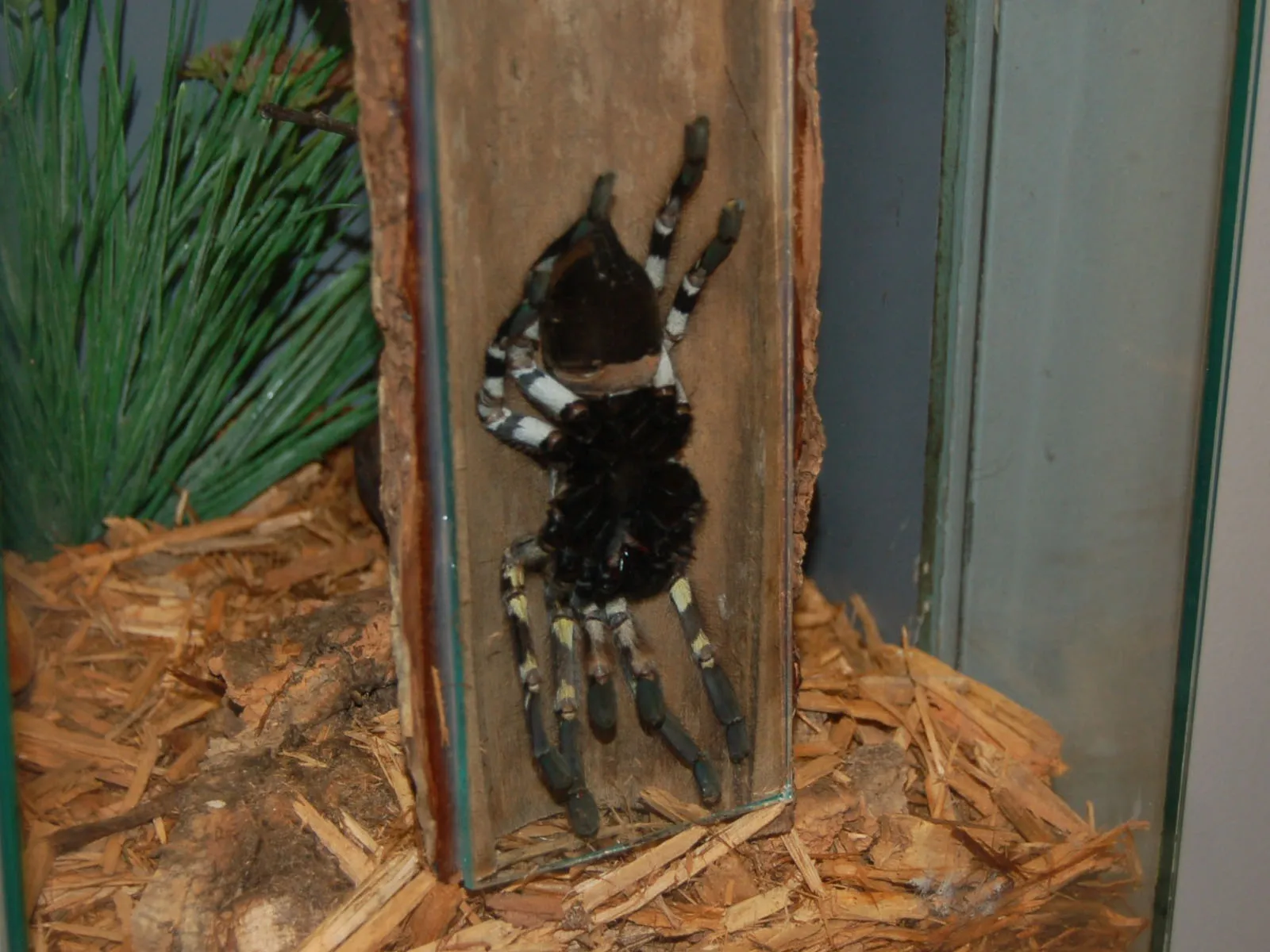
Blue Indian Ornamental Tarantulas can be fast and defensive, so handling should be kept to a minimum and done with extreme caution. If handling is necessary, do so over a soft surface, like a bed or carpet, to prevent injury if the spider falls. Avoid handling the tarantula if it appears agitated. Use a soft brush to gently guide the spider if needed. Never try to grab or force the tarantula. It’s best to admire these beautiful spiders from a distance. Always wash your hands thoroughly after handling or interacting with the enclosure.
Conclusion
Owning a Blue Indian Ornamental Tarantula can be a rewarding experience for anyone who appreciates the beauty of exotic pets. By following these guidelines, you can ensure the well-being of your tarantula and enjoy a fascinating glimpse into the world of arachnids. Remember to prioritize the spider’s health, provide a proper environment, and always handle it with care. With a little research and a lot of care, you will be well-equipped to care for your Blue Indian Ornamental Tarantula. When you understand how to provide the best care, your pet tarantula will thrive.
